December 18, 2020
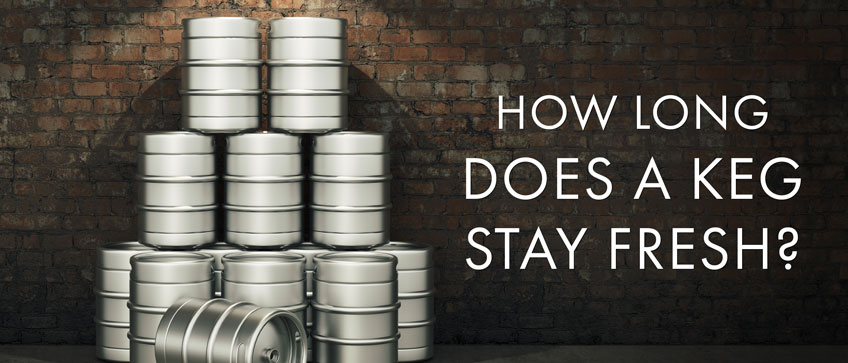
We all want to get the most of our keg, enjoying every drop of beer from our kegerator but you may be wondering how long is this keg going to last. This can be very complicated because it varies depending on the style of beer, your dispense system, and the temperature that you store your keg at.

Oxidation and Taste
Depending on who you ask, the answer typically ranges from 20-120 days. This depends on your definition of freshness and when a beer will still taste acceptable to you. One very important concept to consider is oxidation. As soon as a keg is tapped, it has been exposed to oxygen, which will over time alter the flavor of your beer.
Depending on your sophisticated or sensitive palate, you may begin to taste the change in your beer within a week of tapping it. The longer oxygen is exposed to your beer, the more nuanced flavors will be harder to detect and it may not taste the same but this does not mean the beer is no longer good or is no longer fresh.

Beer Dispensing Systems
Your beer dispensing system will greatly affect how long your keg will remain fresh. Each beer dispensing method has its benefits but they will also vary how long your keg will stay fresh. It mostly boils down to how much oxygen your beer is being exposed to and the temperature at which you keep your keg.
Party Pump or Manual Pump
Party pumps are a convenient means to dispense beer without a kegerator, especially on-the-go. Party pumps come are easy to assemble and come with very few parts but kegs served using a manual pump don't last as long because of dispensing the beer using CO2 gas, the pump works by pumping air into the keg to pressurize and dispense.
We just discussed how exposure to oxygen can affect the flavors in a beer and due to the direct exposure of oxygen to your beer through a manual pump, your kegs are not likely to stay fresh for very long. Additionally, the flavors are likely to change more rapidly and this flavor change will be more apparent as more oxygen is being pumped through the keg.
Ideally, you will want to finish the keg by the end of the day or to ensure freshness, purchasing smaller sized kegs will help you maintain the quality of your beer. It is also important to find a means to maintain your kegs temperature while it is dispensing to avoid premature spoilage.
While convenient for tailgating and other on-the-go applications, party pumps can have additional complications such as over-pumping and foamy beer. This is why for on-the-go applications we prefer a Jockey Box, learn more about jockey boxes in our guide here.
Jockey Box
Like a kegerator, a jockey box uses a CO2 tank to dispense the beer, which helps preserve the quality, taste, and prevents early spoilage. Like a party pump, jockey boxes are designed for on-the-go applications but the added benefit of a kegerator taste and experience. They require slightly more assembly and equipment but they offer a significantly better beer drinking experience than a manual pump. Additionally, a CO2 dispense system keeps the keg pressurized but avoids oxidation.
Kegerator
The kegerator is the king of beer dispensing, which is the reason why many restaurants rely on kegerators to dispense their kegs. Not only is the taste and experience of drinking beer from a kegerator better than other dispense systems, a kegerator is designed to preserve the quality of a keg. With a refrigerator storage cabinet, the keg is stored at the ideal temperature for the specific beer that is stored inside. This temperature maintenance also prevents beer from being dispensed warm and foamy.
The CO2 dispense system of a kegerator prevents oxygen from accessing the beer and maintaining the fresh brewery taste. For a properly stored keg in a kegerator, how long the beer will remain fresh will depend on the style of beer. Pasteurized beers can stay fresh from three to six months. For non-pasteurized beers, you can expect the keg to stay fresh approximately two months. Each beer is different and storing your beer at the ideal temperature is essential for its preservation.

Why Keg Storage Temperature Matters
We can't emphasize enough how important it is for a keg to be stored at the proper temperature. Regardless of your dispense system, maintaining a constant and ideal temperature for your keg is the key to keeping your keg fresh. Ideally, most kegs should be kept at 38 degrees Fahrenheit and not much lower or higher.
Keeping a keg at a higher temperature will not only cause your beer to excessively foam but it will also lead to stale beer. Temperatures above 55 degrees Fahrenheit will likely cause your beer to grow bacteria and increase your chances of premature spoilage.
Lower temperatures will cause the beer to retain its carbonation, preventing you from experiencing the nuanced flavors and aromas of each pour. If you allow the temperature to drop even further, below 28 degrees Fahrenheit, your beer is likely to freeze. Some light beers may freeze at even 32 degrees Fahrenheit so, be aware of your storage temperatures.
Kegerators are ideal for keg storage and dispense because they are designed to maintain temperatures. If you are using a party pump or jockey box, be sure to chill your kegs in a tub with ice and water to prevent spoilage.


 Single Faucet Kegerator Beer Dispensers
Single Faucet Kegerator Beer Dispensers Dual Faucet Two Tap Kegerators
Dual Faucet Two Tap Kegerators Triple Faucet Three Tap Kegerators
Triple Faucet Three Tap Kegerators Undercounter Built-In Kegerators
Undercounter Built-In Kegerators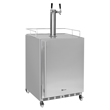 Outdoor Kegerator Beer Dispensers
Outdoor Kegerator Beer Dispensers Commercial Kegerators
Commercial Kegerators Mini Kegerators
Mini Kegerators Cold Brew & Nitro Coffee Dispenser Kegerators
Cold Brew & Nitro Coffee Dispenser Kegerators Home Brew Kegerators
Home Brew Kegerators Carbonated Water Kegerators
Carbonated Water Kegerators 15" Kegerators
15" Kegerators Kombucha Equipment
Kombucha Equipment Guinness® Dispensing Kegerators
Guinness® Dispensing Kegerators Wine Kegerators
Wine Kegerators Kegerator Cabinets
Kegerator Cabinets Kegerator Covers and Accessories
Kegerator Covers and Accessories Kegerators
Kegerators Kegerator Conversion Kits
Kegerator Conversion Kits Kegs & Keg Accessories
Kegs & Keg Accessories Beer Faucets
Beer Faucets Beer Shanks
Beer Shanks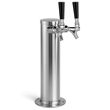 Draft Beer Towers
Draft Beer Towers Keg Taps Couplers
Keg Taps Couplers Regulators & Gas Equipment
Regulators & Gas Equipment Beer & Gas Line Hose
Beer & Gas Line Hose Co2 and Nitrogen Air Tanks
Co2 and Nitrogen Air Tanks Beer Line Cleaning Equipment
Beer Line Cleaning Equipment Drip Trays
Drip Trays System Fittings
System Fittings Jockey Boxes
Jockey Boxes Keg Beer Party Pumps
Keg Beer Party Pumps Glassware
Glassware Guinness® Dispensing Equipment
Guinness® Dispensing Equipment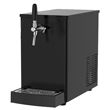 Remote Glycol Systems
Remote Glycol Systems Wine Cooler Refrigerators
Wine Cooler Refrigerators Wine Cellar Cabinets
Wine Cellar Cabinets Wine Racks
Wine Racks Cooling Units
Cooling Units Wine Dispensing Systems
Wine Dispensing Systems Wine Accessories
Wine Accessories Wine Making
Wine Making Nitro Hot Draft System
Nitro Hot Draft System Ready to Drink Bag-in-a-Box Coffee Dispensing Equipment
Ready to Drink Bag-in-a-Box Coffee Dispensing Equipment Nitrogen Infusers
Nitrogen Infusers Nitrogen Tanks & Generators
Nitrogen Tanks & Generators Nitrogen Beer Regulators
Nitrogen Beer Regulators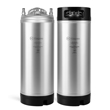 Nitro Cold Brew Coffee Kegs
Nitro Cold Brew Coffee Kegs Cold Brewed Coffee Tools
Cold Brewed Coffee Tools Cleaning Equipment
Cleaning Equipment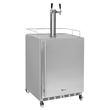 Outdoor Appliances
Outdoor Appliances ADA Appliances
ADA Appliances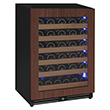 Panel Ready Appliances
Panel Ready Appliances Commercial Grade Appliances
Commercial Grade Appliances Beverage Centers
Beverage Centers Refrigerators
Refrigerators Drawer Refrigerators
Drawer Refrigerators Ice Makers
Ice Makers Water Dispensers & Accessories
Water Dispensers & Accessories Freezers
Freezers Home Brew Equipment Kits
Home Brew Equipment Kits Fermentation Equipment
Fermentation Equipment Boiling and Mashing Equipment
Boiling and Mashing Equipment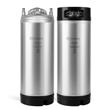 Home Brew Beer Kegs
Home Brew Beer Kegs Home Brew Kegerator Conversion Kits
Home Brew Kegerator Conversion Kits Brewing Tools
Brewing Tools Home Brew Ingredients
Home Brew Ingredients Cleaning Chemicals
Cleaning Chemicals Test Equipment
Test Equipment Home Brew Beer Bottles and Bottling Equipment
Home Brew Beer Bottles and Bottling Equipment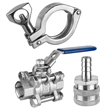 Brewery Fittings
Brewery Fittings Draft Beer Equipment
Draft Beer Equipment Homebrewing Equipment
Homebrewing Equipment Wine Equipment
Wine Equipment Luxury Appliances and Refrigeration
Luxury Appliances and Refrigeration Coffee Equipment
Coffee Equipment Kombucha
Kombucha The Beverage Blog
The Beverage Blog Frequently Asked Beer Questions
Frequently Asked Beer Questions Shop by Brand
Shop by Brand Shop by Category
Shop by Category



